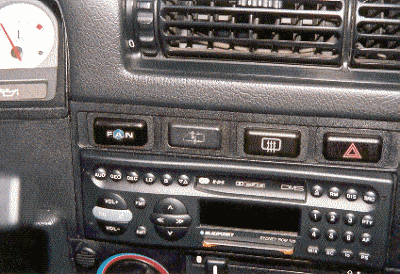For the US market BMW specified the original M3 (the "Real" M3) with an engine driven fan. No doubt this was necessary due to the higher ambient temperatures in some areas of the US compared with Europe,
and the fact that the US model was specified with A/C. The car was also equipped with a thermostatically switched auxilary electric fan in front of the condensor and radiator.
It requires power to drive the engine fan, and this increases with engine speed despite the thermostatically controlled slip clutch which limits the fan speed. The fan also has significant rotating inertia which resists
engine acceleration. Engine fans also are a pet peeve of mine from the standpoint of noise. To me they sound something like a 1982 Datsun pick-up truck, with an associated aura of low quality.
On my M3 I replaced the engine driven fan with an electric fan. I was able to select a unit from Spal which fit in the available space between the radiator and the engine, and which has the highest airflow for the
the least current draw. This I powered by the battery through a fused connection switched by a relay.
On these types of conversions people ususally switch the fan by the original fan thermostat. This results in the fan being turned on along with the original fan in front of the radiator. This seems like closing the
gate after the horse has left because the OE fan is designed to switch on when the engine temperatures are nearing the limit. I preferred to use the new fan to maintain temperatures before they got high enough to
required the OE fan.
So for my system I operate the new fan switching relay by the brake switch because I wanted the fan to operate while sitting at a stoplight. This is why I selected a fan with an efficient airflow-to-current draw. I put an electronic timer in the circuit so the new fan delays coming
on until 5 seconds after the brake pedal is pressed. This avoids the fan coming on when using the brake while driving. For stop and go situations I added a manual switch in parallel with the pedal switch so that
either on turns on the new fan. I modified an OE hazard switch and put it in an unused switch opening on the instrument panel.
The system works perfectly, and a noticeable improvement in engine driveability was felt when the engine fan was removed.
 |
The manual fan switch is on the instrument panel.
|



























